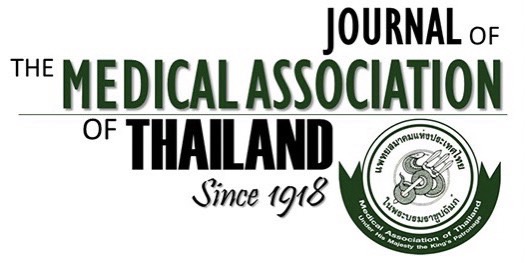Initiation of Antiretroviral Treatment with Dual Nucleoside Reverse Transcriptase Inhibitors in Human Immunodeficiency Virus-Infected Infants with Less Advanced Disease in a Resource-Limited Setting : A Multi-Center Study in Thailand 1998-2000
Kulkanya Chokephaibulkit MD*, Nirun Vanprapar MD*, Ruengpung Sutthent MD, PhD** Wanatpreeya Phongsamart MD*, Tawee Chotpitayasunondh MD***, Piyaporn Bowornkitikajorn MD****, Rudeevilai Samkoset MD*****, Uraiwan Tarunothai MD******, Sanay Chearskul MD*
Affiliation : *Department of Pediatrics, **Department of Microbiology,Faculty of Medicine Siriraj Hospital, Mahidol University, Bangkok, Thailand ***Queen Sirikit National Institute of Child Health. MOPH **** Charoenkrung-Pracharuk Hospital, *****Phramongkutklo Hospital, ******Vachira-Bhayabarn Hospital,
Objectives : To evaluate the feasibility, duration of efficacy, and outcome of therapy with dual nucleoside
reverse transcriptase inhibitors (NTRI) initiated in HIV-infected infants with mild to moderate disease.
Materials and Methods : During 1998-2000, a multi-center prospective open-labeled operational study was
conducted. Antiretroviral nao^ve HIV-infected infants were enrolled in seven hospitals to receive either zidovudine
(AZT) plus lamivudine (3TC) or AZT plus didanosine (ddI). Infants who were in CDC stage çC3é were
excluded from the study.
Results : Of the 88 infants, the mean age of treatment initiation was 6.8 months, and the mean initial CD4 was
1538 cells/mm3 (21.4%). The z-scores for weight and height increased after 4-8 months of treatment, and by the
24th month, were +0.89 and +0.69 higher than at enrollment. The CD4% peak increased at 8 months of
treatment, by a mean increment of 4.19%, but decreased to the level of 1.08% above baseline by the 24th month
of treatment. Three (3.4%) infants died, 11 (12%) had disease progression, 7 (8%) was prematurely discontin-
ued from the study protocol due to poor compliance, and 37 (42%) were lost to follow-up. At the end of 24
months, all remaining 30 children were in stable condition with a chance of clinical and immunological
stability of 34% and 68% by intention-to-treat and on-treatment analysis, respectively.
Conclusion : Clinical and immunological benefit from dual NRTI was limited. Treatment of HIV-infected infant
with mild to moderate disease in a resource-limited setting may have limited feasibility due to the high
drop-out rate.
Keywords : HIV-infected infants, Antiretroviral therapy, Dual NRTI



